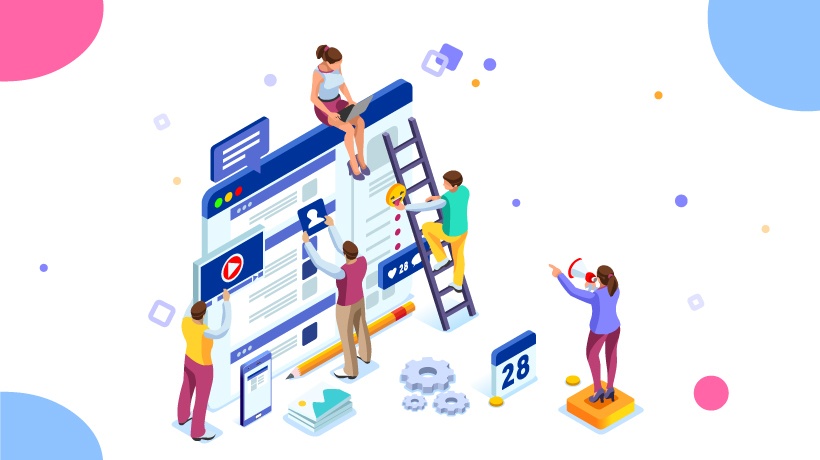Customer Service Training Categories To Enhance Customer Satisfaction
Everyone knows that providing excellent customer service is good for business. Providing great customer service has been proven to increase customer satisfaction, returning customers, profits and improve brand reputation. What most companies don’t know is that providing high-quality customer service is even more important than before because it is the leading factor that consumers use to decide whether or not they want to purchase from a company. For many customers, the quality of service is even more important than the price, making customer service training essential to an organization's success.
Microsoft recently reported that 54% of global consumers say that they have higher customer service expectations than they did a year ago [1]. Quality of customer service has been ranked as the #1 factor in a recent survey that impacts consumers’ level of trust with a company.
Implementing a customer service training program is the best way to ensure that your employees have the skills they need to provide customers with positive experiences. When planning a customer service training program, using a blended learning approach with the 70:20:10 framework is highly recommended. The 70:20:10 framework suggests that 70% of training should be done on the job, 20% of training should be social and 10% should be formal training. Several different training types can be used in each of these categories to teach your employees essential customer service skills they need to successfully work with customers.
Types Of Formal Training For Customer Service
Although formal training is the smallest category, it is usually the initial training that is used to build the foundation of knowledge your employees will need. The 3 most common training methods used for formal training are:
1. Instructor-Led Training
Instructor-Led Training is the form of training that is led by an instructor. This is a highly interactive format and allows for conversation and knowledge sharing, making it one of the most engaging forms of training and great for large groups. This form of training is a great way for employees to learn communication skills that they might need to provide excellent service.
This method is not recommended for highly technical training or small groups of people with varying skill levels. If not carried out with the right objectives in mind, Instructor-Led Training can be more expensive than other training options.
2. Webinar
Webinars are great for training large groups and are especially useful when training employees who have different skill levels. This form of training is very effective when your workforce is spread across various locations. Participants can watch webinars from anywhere they have an internet connection. These can also be recorded and watched later which makes them a great option for those with busy schedules. It is a very cost-effective format of training as it does not incur any logistics cost, just an internet connection and multimedia device suffice the purpose.
However, there are few disadvantages which include lag time, incompatible browsers and learners engaged. Being a remote training option, we have no control over the learning environment which might lead to disengaged participants.
3. eLearning
eLearning or online training is the most trending and rapidly transforming form of training. This can be leveraged for both small and large groups. Though the investment this training methodology asks for is quite less, the learner engagement rates are often found to be remarkably high. It is because of the flexibility that eLearning offers. Participants can learn and absorb information as per their convenience with the help of a smart device and internet connection. Online training enables learning on the go. Amongst many, simulation is one of the highly engaging learning experiences offered by eLearning. Simulations offer real-life situations to participants to deal with various scenarios and understand the consequences of their actions. This allows them to fail faster, learn quicker. Because of this activity, customer service teams can identify the most suitable solution to any problem and resolve customer queries with the utmost ease. Employers can also track the progress of their employees and identify areas employees may be struggling in.
One disadvantage of eLearning is that employees can click through the program without retaining any of the information.
Types Of Social Training For Customer Service
Social training includes activities that encourage employees to work and learn from others. Social learning helps employees stay engaged and promotes a stronger connection with work and the company culture. It is a great driver of working cross-functionally and mutual understanding during critical situations. Here are some social training methodologies:
Mentoring
Mentorship programs have been proven to improve employee retention rates and speed up the skill learning process. Forbes recently reported that employees who participate in mentorship programs are 5 times more likely to stay with a company and get promoted [3]. Mentorship is especially beneficial because it makes it easier for employees to get answers quickly. If there is any particular topic, they’ve struggled with during formal training, a mentor who has experience will easily be able to assist them.
Although mentorship programs are usually successful in training new employee's customer service skills, it is not usually enough all on its own. It usually works best when paired with other forms of formal and on-the-job training.
Role-Playing
Role-playing is a fairly simple training technique where two or more employees act out customer service scenarios to practice for real-life situations. This form of training is effective and engaging because it helps employees practice the skills that they are supposed to be learning, making it easier for them to remember.
There are a few disadvantages to role-playing. This method of training requires that two employees can find time to work together and practice these skills. It can also be difficult if both employees are trying to learn a new skill because they may not have the necessary knowledge to provide feedback.
Types Of On-The-Job Training For Customer Service
On the job training is the largest portion of the 70:20:10 framework. These forms of training encourage employees to learn while doing their work. It is well-experienced by a number of people that the skills they cultivate on the job tend to stay with them for longer.
Job Aids
Job aids include PDFs, posters or maybe a mobile site to reference information. These work as cheat-sheets while dealing with a difficult customer and team members can sail through tough times by referring to these. Employees are provided with essential information just in time when they need it the most. This form of training is effective because it helps employees recall important information on the spot. Job aids help employees retain and recall the knowledge that they have learned during the training program.
Electronic Performance Support System (EPSS)
EPSS tools help employees learn technical skills they need to provide excellent customer service. It is best considered when individuals are required to attain knowledge in a business environment. This can come in handy for new joiners who can be taught skills at the very beginning of their instinct with the business. EPSS will not only familiarize them with the product and services but will also educate them about product or service knowledge.
These tools help guide users through each step of the process that they are trying to learn. Instead of having someone tell you what steps to take in person, these tools use icons and balloons to lead you through the process. This tool improves service experiences by teaching employees in their moment of need.
Key Points
Customer service training is an essential part of delivering excellent Customer Experiences. Each type of training has benefits and drawbacks. Before designing a customer service training program, it is important to prepare a checklist that can help you incorporate the most essential elements in the program to develop and retain knowledge. Choosing the right training tools and methods will help your organization improve you increase sales, improve your brand reputation and increase customer satisfaction. Infopro Learning’s latest eBook, The Advanced Guide To Top You Customer Service Training Game is focused on identifying the problems with existing customer service programs and suggests solutions to resolve those issues. This eBook also talks about the most popular training methods that will ensure a great Customer Experience.
References:
[1] 2017 STATE OF GLOBAL CUSTOMER SERVICE REPORT
[2] Improve Workplace Culture With A Strong Mentoring Program







